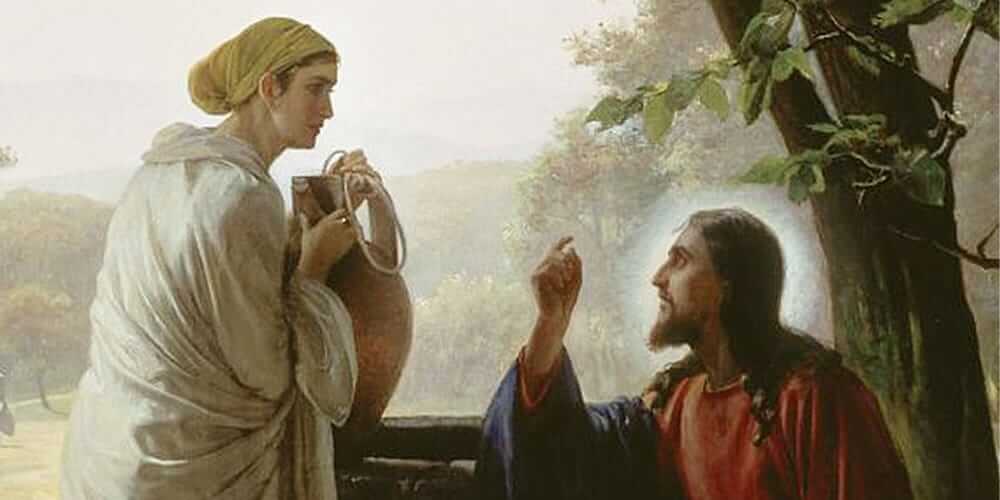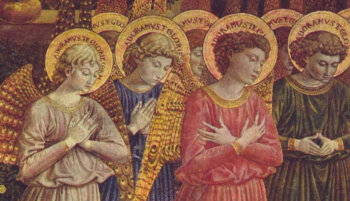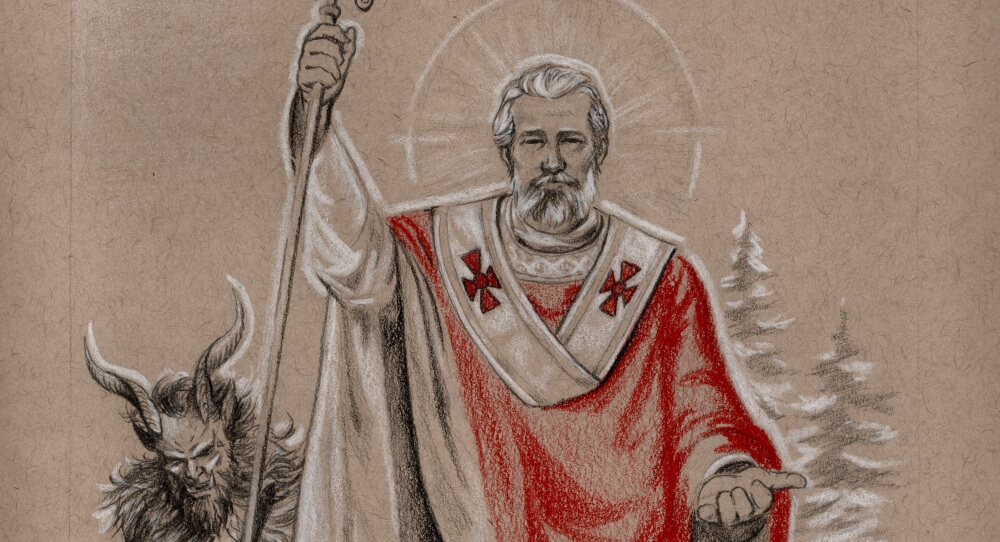
Who has not heard of St. Nicholas?
His is a name that has become synonymous with the Christmas season. Even our materialistic world hasn’t successfully separated the secular image of Santa Claus from the heavenly bishop. While the details of his earthly life have been obscured by the passage of time, what little he is known for has made a lasting impression on this earth.
Three qualities in particular seem especially pertinent to this day and age: his patronage of children, mariners, and…exorcists. Nicholas is heralded by Christians as a quiet guardian of little children, yet this association was made entirely by accident! It is said that he is mild and meek, yet he has been named as a patron of sailors—tough men known for intense labor at the mercy of the elements. He has been called most kind and gentle, yet exorcists frequently invoke his aid while the most violent of spiritual conflicts are being waged.
So who was this clergyman—and why is there such a stark contrast between his life and his reputation?
Patron of Children
While it would require an actual litany to cover all the things that Nicholas has been invoked for, he is best known as the patron saint of children. But how did he come to be affiliated with them?
According to various medieval folktales, it all started with a harrowing story of three schoolboys. While a severe famine swept through the land, three lads were making their journey homeward and stopped at an inn for the night. The innkeeper, or an evil butcher depending on the iteration, killed the young customers and left their remains in a pickling barrel, with plans to sell them as ham. Tending to the hunger-stricken residents of the area, St. Nicholas then arrived at the inn. Having a spiritual intuition of the crime, the bishop rebuked the killer and prayed over the barrel. When the wooden tub was opened, the three victims sprang out, alive and unharmed. The saint has been dubbed the saintly protector of children ever since.
Yet this account, true or not, was modified and altered each time it was told to the next generation, much like the game of telephone. While the common understanding of the fable is one that highlights the rescue of children, the older anecdotes indicate that there might be a critical mistranslation.
As the tale spread, it moved through the various languages of Christendom. What originated as the word “clerks” came to be interpreted as “students.” The word for “student” in one tongue was then taken to mean “child” in a different one. Before long, three academic men working as lawyer apprentices or accountants had become three youths, often not much older than toddlers. Amusing as it may be, perhaps this honest mistake was not really an error after all, but an insight into the appeal of this man of God with the most innocent and vulnerable among us.
This phenomenon is still readily seen today on Christmas morning in households across the world, where the youngest family members eagerly rush beneath the boughs of a bedecked tree to see what gifts Santa Claus has left. The giving of gifts, a famous characteristic of this extraordinary figure, has certainly been enjoyed by adults for centuries, but it is a practice that nearly always revolves around children. However, the giving of presents by Jolly Old St. Nicholas is part of an older tradition that was originally practiced, not on Christmas Eve, but on the saint’s feast day, the 6th of December.

During the Middle Ages, it became customary for Catholics to hold festivals on the feast of St. Nicholas, during which children received gifts on behalf of the benevolent patron of the day and in commemoration of his holy and generous life. Since the feast of St. Nicholas always lands in the early days of Advent, it fittingly heralds the even grander feast of giving: the most joyous birth of Our Savior on Christmas Day. One of the most noteworthy trademarks of the life of St. Nicholas was his abiding generosity; thus, it became commonplace in Germany, Holland, Italy, Switzerland, Austria, and many other European countries for dried fruits, nuts, candies, and other small gifts to be left in children’s stockings or shoes for the kindly saint’s feast day.
This tradition is one that has quietly but steadily made its way to the United States, and may be the first way some of us were introduced to holy Nicholas, the bearer of gifts. One of the much anticipated treats of the day, now a staple even in secular circles during the general yuletide season, is the gift of an orange.
The link between St. Nicholas and oranges is its own story.
Oranges, Oceans, Sailors, and Saints
Throughout most of Europe, oranges were hard to come by. As a winter fruit, they were only available when Christendom was entering the colder months, a time when travel would slow and merchant ships would sail the harsh seas much less often. If the citrus harvest was transported, it would only last a matter of weeks before spoiling, so oranges were a rare and relished commodity.
It would come as no surprise, then, that they were most often obtained by the wealthy and grew to be yet another symbol of economic status. For those who could afford the juicy citrus, they were a rare treat. During the Renaissance era, the Dutch enjoyed a strong and healthy global trade establishment, so they were often the only merchants capable of obtaining the exotic fruit before the harbors froze, shipping large quantities back to their homeland just in time for St. Nicholas’ feast—much to the delight of the young ones.

Thus, with the help of seamen and to the great joy of its most diminutive (and perhaps most appreciative) consumers, the orange quickly took its place as a recognizable symbol of the season, while it also remains the curious link between two unique classes—sailors and children—who claim St. Nicholas as patron.
Other stories fortify the maritime connection even further. Legend has it that Nicholas had a special devotion to the Christ Child and was moved to visit the Holy Land, especially the site of His birth. He set sail from Asia Minor, but during the voyage a great storm arose that threatened to capsize the sinking vessel. In answer to Nicholas’ prayers and sacrifices while aboard, the Creator calmed the turbulent seas and left the crew unharmed.
The holy Nicholas visited the sacred sites of the Word Made Flesh, including Bethlehem, and was inspired to return to his own land and share his zeal with his own countrymen. Doubtless it was because of this episode that the Bishop of Myra became known, even during his lifetime, as a friend of mariners.
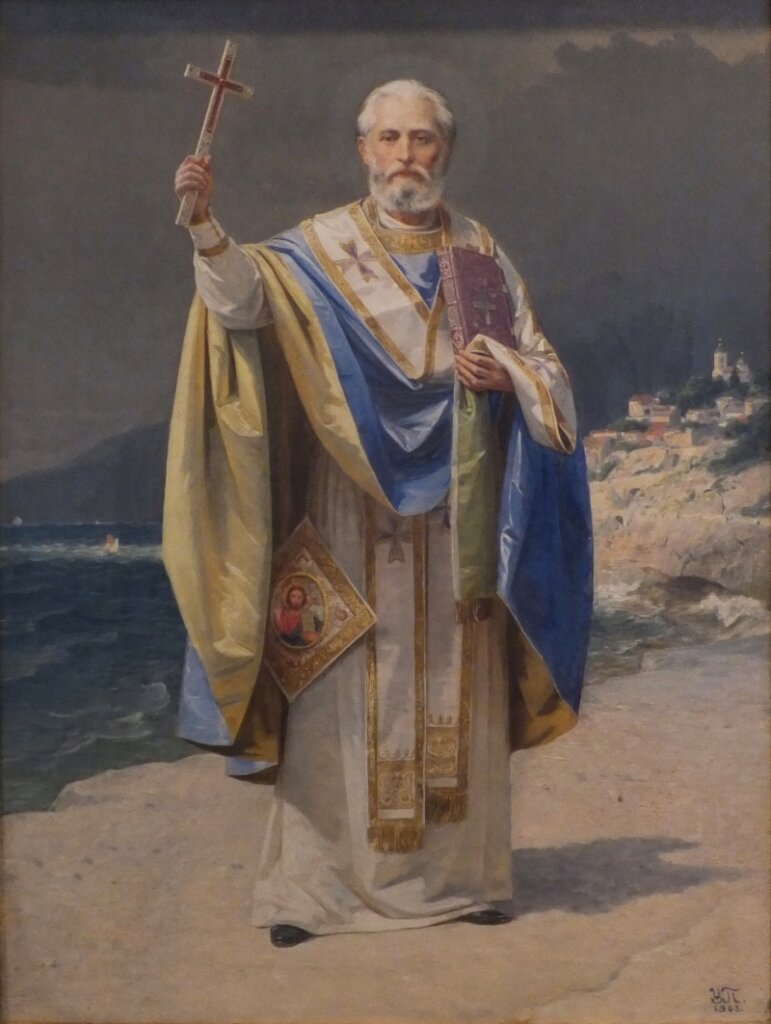
St. Nicholas the Demon Fighter
One more sea story shows a turn in the legacy of St. Nicholas from peaceful priest to brave bulwark: a man remembered less-famously as a demon fighter.
In the 12th century, theologian Honorius Augustodunensis wrote in his Sermon of St. Nicholas that, after the bishop’s death, numerous pilgrims would visit his shrine. One ship in particular was about to set sail to his burial site when a devil disguised as a poor old woman and fellow-pilgrim handed one of the voyagers a flask filled with oil and formed in the shape of the Roman goddess Diana. Complaining that she could not make the sea-journey herself, the old hag entreated the pilgrims to take the oil to the halls of the saint’s tomb so that the lamps might be refilled and the pilgrims’ prayers more readily heard by heaven.
The kind pilgrims accepted the woman’s offering but, once at sea, the crowd on board heard a voice from the heavens commanding them to throw the flask overboard because it in fact came from a vengeful spirit of hell. As soon as it was thrown over the side of the ship, the oil violently exploded, burning furiously over the water’s surface but leaving the passengers unharmed.
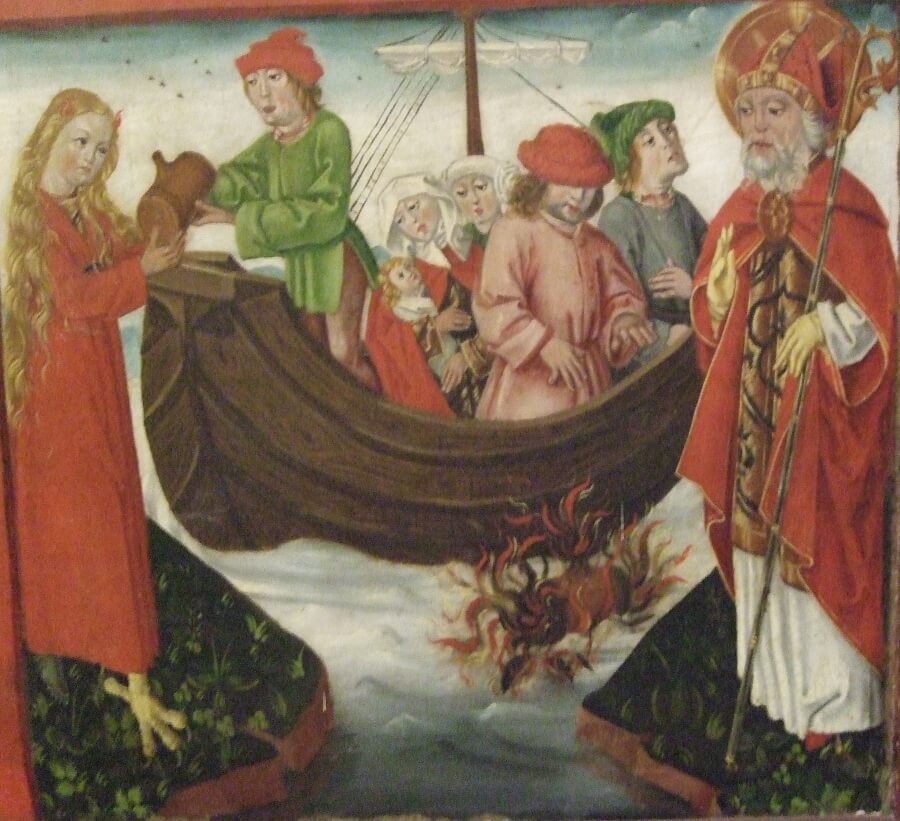
photo credit: Friedrichsen/CC BY-SA 3.0
The Legenda Aurea (the “Golden Legend”—a medieval collection of stories about the saints), detailing the life of St. Nicholas, explains further the holy bishop’s clashes with the satanic. He labored first under the reign of the Emperor Diocletian—a hazardous profession since Christianity was still forbidden in the Roman Empire. It wasn’t until Constantine the Great assumed the power of Rome (around the midpoint of Nicholas’s life) that the religion of Christ would be openly tolerated. Even then, the old polytheistic ideals, an age-old part of the Roman identity, were not easily forsaken.
Knowing that the demonic worked through many of the old idols, Nicholas took to exorcizing as many of the heathen shrines and ceremonial places as he could. The blessed bishop therefore gained a reputation for expelling the devils that infested his diocese.
One group of demons that proved particularly troublesome were the ones impersonating the aforementioned goddess Diana, a prominent figure in his domain. Instances of his work that especially enraged the devils were the felling of a sacred cypress tree dedicated to the goddess as well as the complete demolition of a magnificent temple. Nicholas and the demon “goddess” would be locked in combat for the remainder of the saint’s life. Thanks to this resumé, he is now widely invoked as a special patron of exorcists.
Next enters the strangest part of the saint’s legacy, where one facet of his career, foe of demons, seamlessly re-connects to the gentler side of his character: protector of children. Again, so much of the saint’s reputation significantly revolves around the small, the innocent, and the helpless. His legacy begins and ends with children.
St. Nicholas vs. the Krampus
If one were to visit the region of the Tyrol—where the borders of Germany, Austria, Italy, and Switzerland congregate—the night before the saint’s December 6th feast, one would witness a most unusual sight.
In the dark streets of snow-sprinkled towns, hoards of large hairy creatures with huge horns and grotesque visages charge down the village roads. Threatening any onlookers, some of these monsters wear chains, others rattle cowbells, and nearly all brandish rough rods freshly broken from nearby trees.
This strange event is called the Krampuslauf (“Krampus run”), where the beasts impersonate the folkloric creature Krampus, and the night is known as Krampusnacht (“night of Krampus”). In most cases, the fiendish brutes hoot and holler at passersby, swiping at their legs with the wild boughs until a bell is rung in the town square and the ruckus gives way to a lone figure dressed as St. Nicholas. He quiets the snarling brutes, addresses words of welcome to the rest of the audience, and disperses loads of either candy canes, roasted chestnuts, or other goodies for the crowd to enjoy. While this remains a popular custom in the Tyrolean region, it is actually part of an older Germanic tradition.
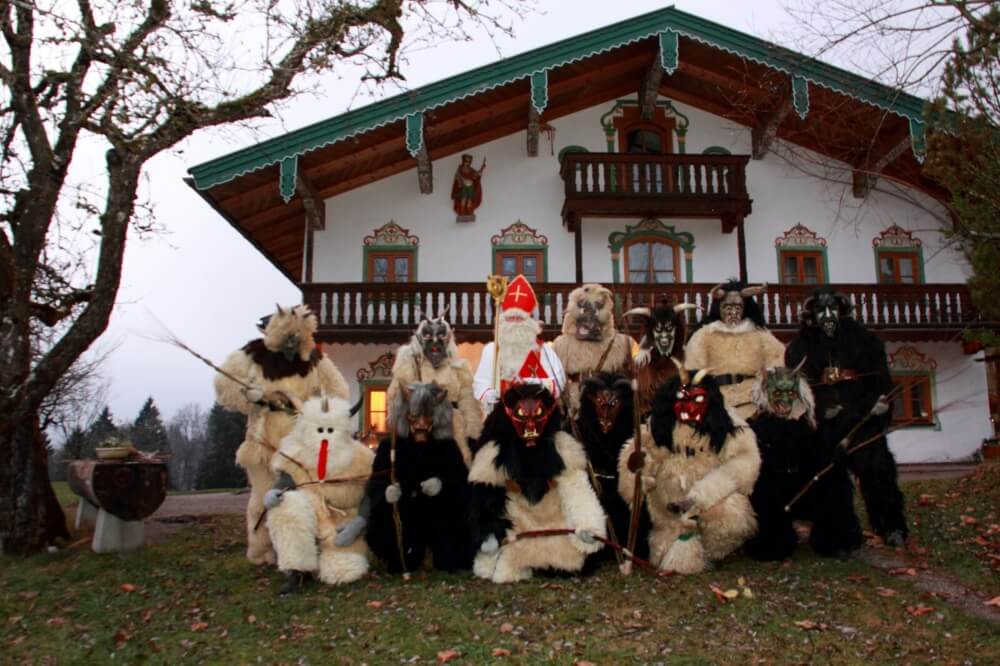
photo credit: Niederberger Lukas/CC BY-SA 4.0
Singular to this area in the 12th century were the Nikolasspiele or “Nicholas Plays,” similar to the medieval Paradise Plays (plays depicting the origins of mankind and the Fall as context for salvation history). These were inspired by the efforts of the Church to make the lives of the saints more accessible and entertaining to the faithful, who did not have the luxury of a good education or even literacy. These plays, like the Golden Legend, illustrated the heroic and the bizarre according to the local customs. They also served as a way to tame the older pagan concepts that still hung round the newly-baptized population.
The Krampus run has a very long history, possibly reaching back to 500 A.D., and carries some influence from the pagan Norse rituals. The evangelization of the Norse paired the newly-popular St. Nicholas with the long-established character of the Krampus, sparking a gradual grassroots movement. In short, the new Faith incorporated good aspects of the old ways and gave them a fitting place in the nation’s culture. It was a strange yet somewhat charming crossover, for each figure appropriately complemented its counterpart. A hero is only as good as his villain; thus, Krampus posed a familiar but worthy challenge to the saint.
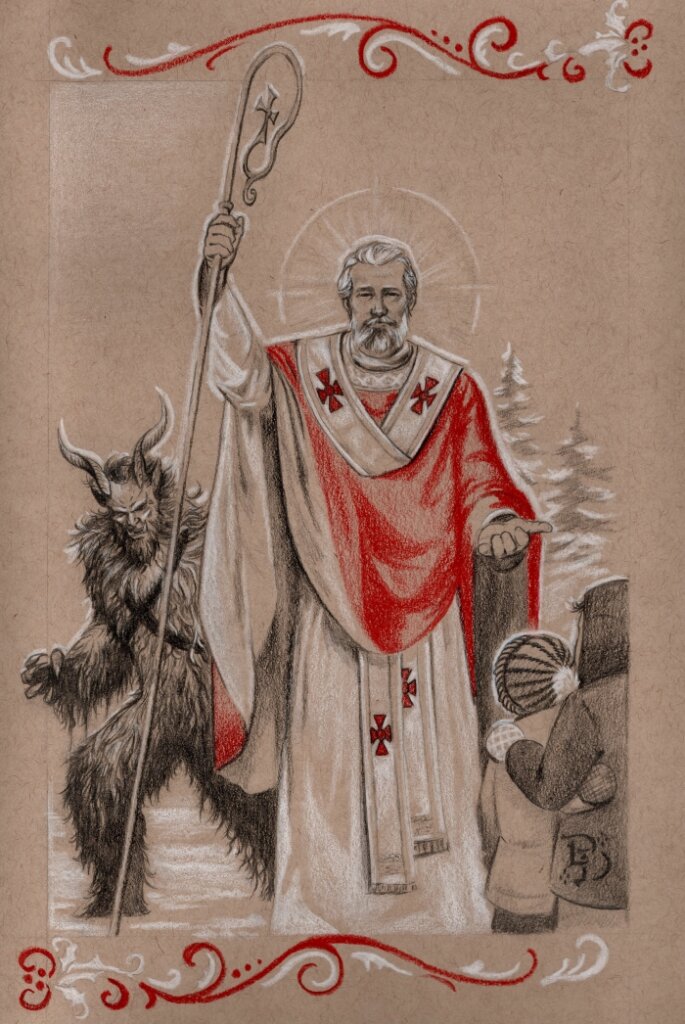
extends his hand kindly and protectively to the children in the foreground
Original art by Daniel Dougherty
Parents quickly utilized the popular figures and by the 1800s, house visits with the two characters became quite common and quite the treat. A traveling Nicholas would go door to door and quiz the children on their catechism. Children who gave correct answers and displayed respect were rewarded with tasty treats from the saint, but children who refused to participate or obstinately gave wrong answers were introduced to the howling devil who would threaten to carry them off, discipline them with a swipe or two of birch twigs, or simply leave them a cold lump of coal and no candy.
Author Al Ridenour puts it best when he states:
Those who view the whole production in terms of harsh adult discipline overlook how intimately the house visit is attuned to the child’s world of imagination. The encounter is made uniquely childlike and meaningful as it is played out by larger-than-life figures. Success in the encounter banishes the ravening horned monsters to the frozen outdoors and brings a small gift and gentle words from a regal man with whiskers like clouds and a hat like a church. The child’s small trial is envisioned from his perspective, made huge as the child experiences it. He not only becomes the center of this living room drama, but the center of an epic battle pitched between the powers of heaven and hell…And in the scene’s playful staging, the adults at some level surely also experience and enjoy some of that same childlike grandiosity of imagination.
Al Ridenour, The Krampus and the Old, Dark Christmas: Roots and Rebirth of the Folkloric Devil, p. 248
Christ Himself instructs His followers clearly: “Unless you become as little children, you shall not enter the kingdom of heaven.” In the drama of Krampusnacht, children witnessed the war for their very souls between two supernatural characters in the simple ways which their village could muster. In terms of both physical and spiritual formation, sometimes it really does take a village to raise a child, especially when it comes to entering God’s kingdom.
There have been recent efforts to repopularize the Krampus in the secular world, often reimagining him as Santa’s evil twin or a shadow of St. Nick endeavoring to introduce horror and the macabre into the Christmas season. But these are hollow, noisy, and mean-spirited shells of the original persona who, while pagan by birth, serve a clear and necessary purpose within the context of the Catholic Faith: to relate that devils really do exist and they always strive to corrupt goodness and innocence. Moreover, these roaring demons are always inextricably chained (often literally) to the crimson clergyman who demonstrates that monsters have no power except where God allows. Without St. Nicholas, then, Krampus is hollow, frail, and pointless; as the scarlet saint’s reluctant companion, however, the heathen monster offers a warning through the guise of punishment: true joy is found in the grace of God and with His friends who share it readily.
In the end, those who claim good St. Nicholas as their own are too numerous to count, but one thing is for certain: a singular friendship has been sparked between this marvelous friend of God and the youngsters of the world, and it would seem that his powerful and varied patronage is most vividly displayed in his role as defender. A champion for both the innocent and the common man, Nicholas places himself between the forces of evil and the souls made to be with God. In no better way is this shown than in his merry yearly visits to households on every continent where he spreads hope, charity, and good cheer, a guaranteed aid for keeping the darkness at bay.
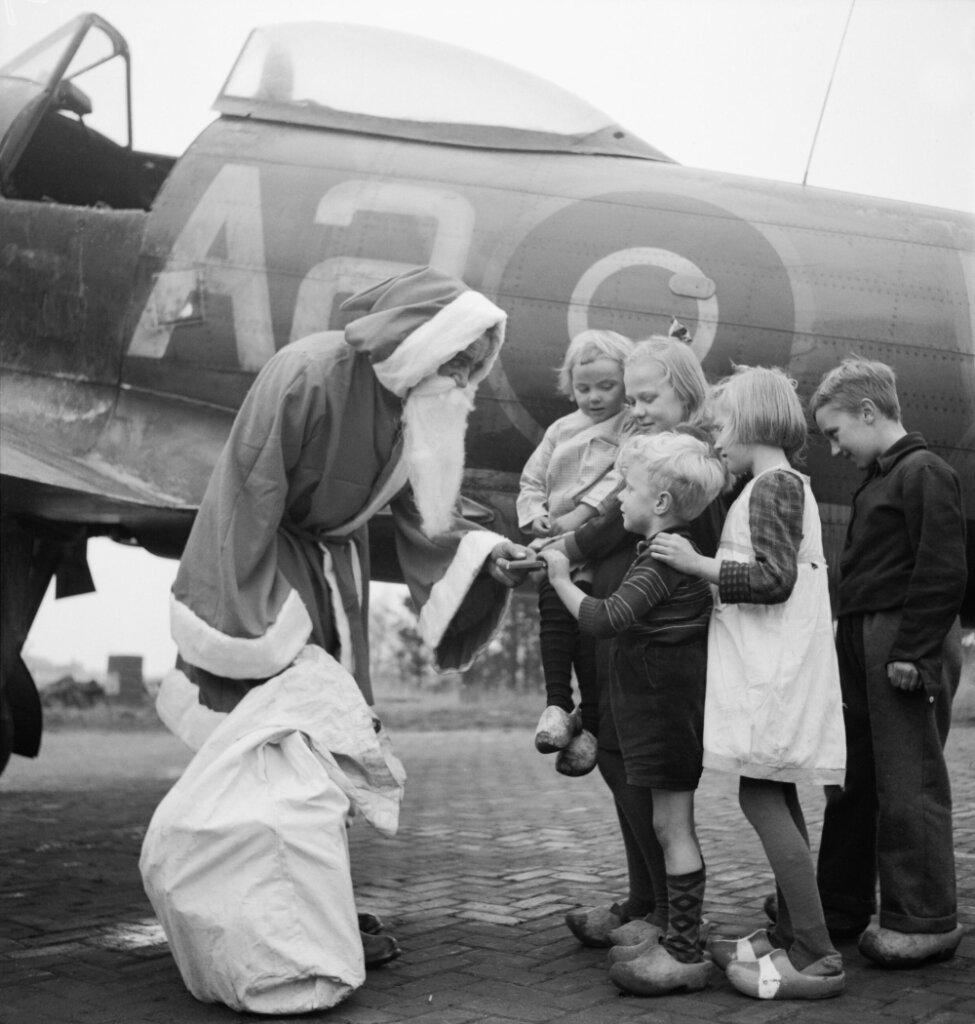
as he gives goodies to Dutch children during World War II
In all his many adventures, the legacy of St. Nicholas says one thing: Christmas is coming! His generosity to children and the children-at-heart is a signal to all mankind to ready themselves for the birth of another Child Who waits to be welcomed into our hearts. May we all have the spirit of a child in all the ways that count, so that we may enjoy the blessing of the Divine Child St. Nicholas loved upon earth and with Whom, on our behalf, he now intercedes in heaven.

